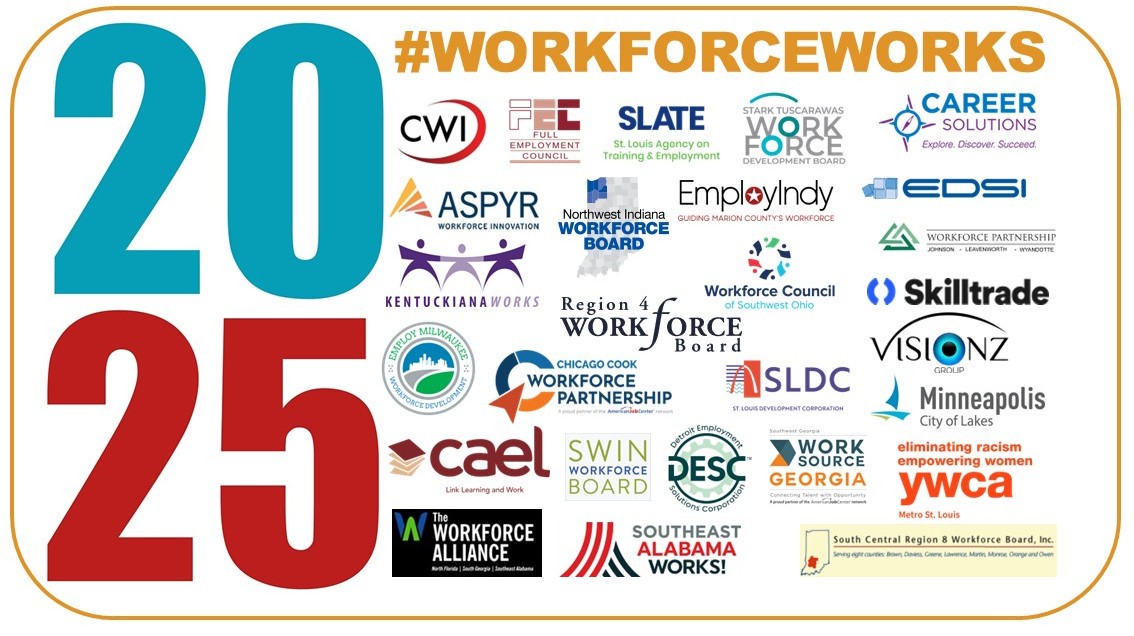Every September, Workforce Development Month reminds us of a powerful mission: helping people build the skills, knowledge, and confidence they need to succeed in today’s workforce, while ensuring that employers have access to the talent they need to grow and compete.
At its core, workforce development does two things. It empowers individuals to pursue meaningful careers, and it supports businesses by creating a pipeline of skilled, job-ready talent. It’s about preparing people for work and preparing work for people and making sure both can thrive together.
Facing a New World of Work
Today’s workforce development landscape is changing fast. Policy shifts, economic uncertainty, and global disruption have all made long-term planning more difficult. Programs often rely on public funding, which can change based on elections, budgets, and shifting priorities. When support becomes unpredictable, so does the stability of services that help people find work.
Economically, many places are still adjusting to new realities. Some are recovering from job losses, while others are adapting to new industries. A potential recession, changing business needs, and disruptions in funding have created a need for more flexible and responsive systems.
At the same time, social and demographic shifts are reshaping the workforce. The U.S. is seeing a declining birth rate, but a growing number of working-age individuals, many of whom face obstacles to employment. Youth disconnection from school and work, especially among young men, is becoming more widespread. For many, the path to opportunity remains obscure and uncertain.
Rethinking the Education and Career Pipeline
Our traditional education systems aren’t always aligned with the demands of the modern workplace. Many students graduate without the skills or guidance needed to succeed in today’s labor market. Meanwhile, college is no longer the only, or even the preferred, path for many. And young people need earlier exposure to career paths, along with real-world learning that prepares them for a changing economy.
To close this gap, schools, training providers, and employers are working more closely.
Innovation as a Path Forward
Technology continues to transform how we work and how we train. Artificial intelligence and automation are disrupting industries. But they also offer opportunities to deliver training in new ways. Digital platforms, virtual learning, and AI-driven career matching can make education within reach and can be tailored to individual needs.
Rather than resisting these changes, workforce systems can lead the way by embracing innovation and building systems that evolve with the times.
Shifting Perceptions, Building Trust
Despite the value it brings, the public workforce system is often misunderstood or underutilized. Some employers don’t view it as a helpful resource, and some individuals struggle to navigate its services. Bureaucratic structures and outdated perceptions can limit its impact.
Improving communication, building trust, and simplifying engagement can change these perceptions. When systems are employer-driven, easy to use, and focused on results, they become powerful tools for both job seekers and businesses.
Preparing for the Unexpected
The future of work is uncertain and unpredictable. Events like a public health crisis, global conflict, and rapid technological shifts have shown us how quickly things can change. Workforce systems are being built to be flexible and resilient, ready to adapt and respond when the unexpected happens.
Strong partnerships, data-driven decision-making, and a commitment to continuous improvement are key to building a workforce that can weather any storm.
A Shared Responsibility
Workforce Development Month is not just about recognition. It’s a reminder that building a strong and future-ready workforce takes a village. It requires collaboration between policymakers, educators, employers, students, and employees. It means investing in people, their growth, their learning, and their potential.
At the Foundation for Talent Transformation, we’re committed to helping individuals prepare for what’s next. By equipping people with the skills and mindsets needed to succeed, and helping employers adapt to change, we’re shaping a future where work creates opportunity for all.
The challenges are real, and so is our collective ability to rise to them. Let’s meet the future of work with creativity, courage, and collaboration. And let’s build what’s next together.






